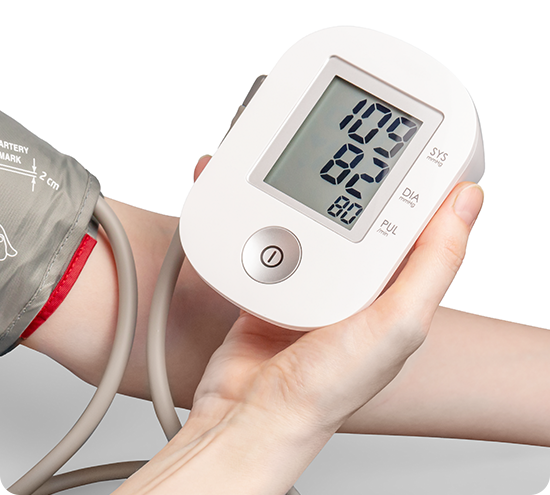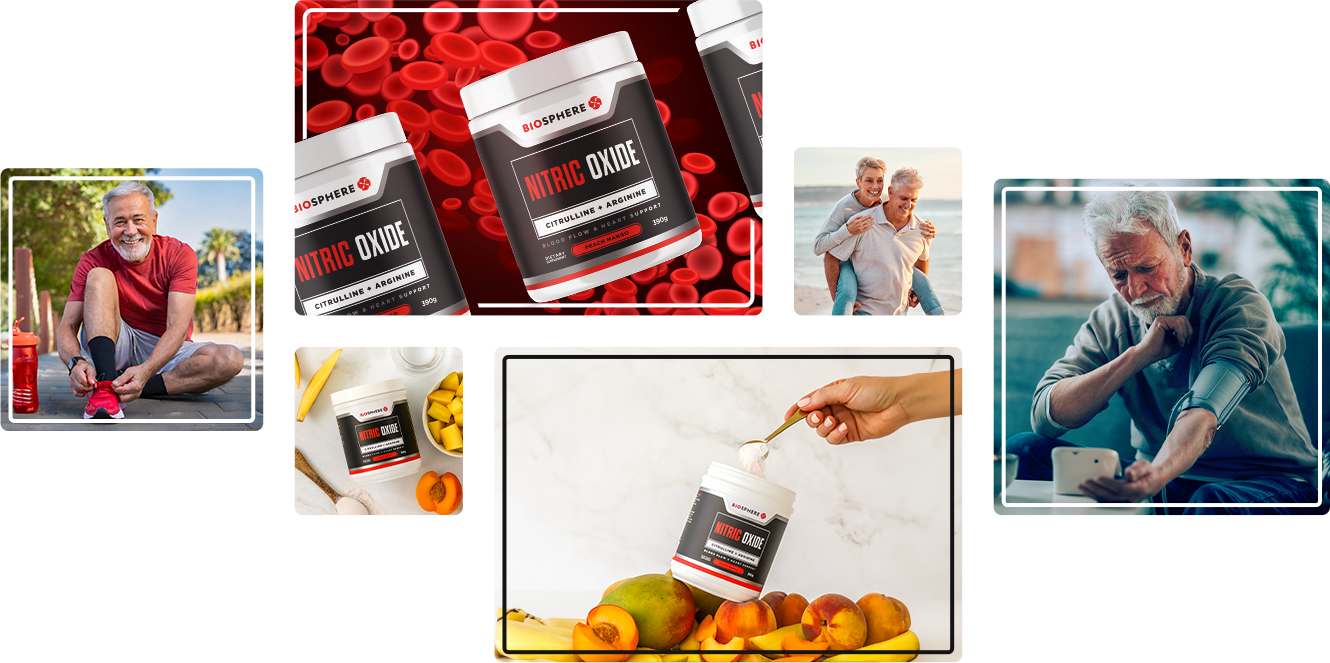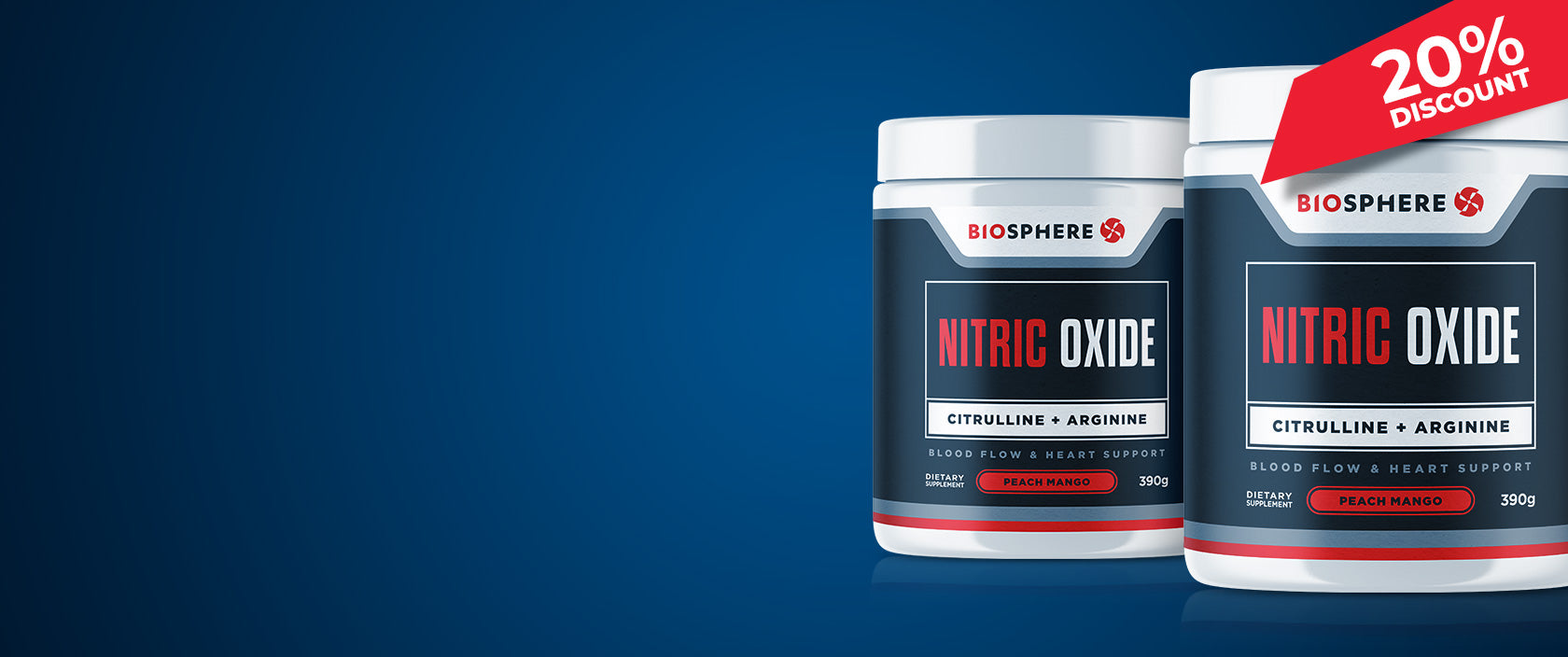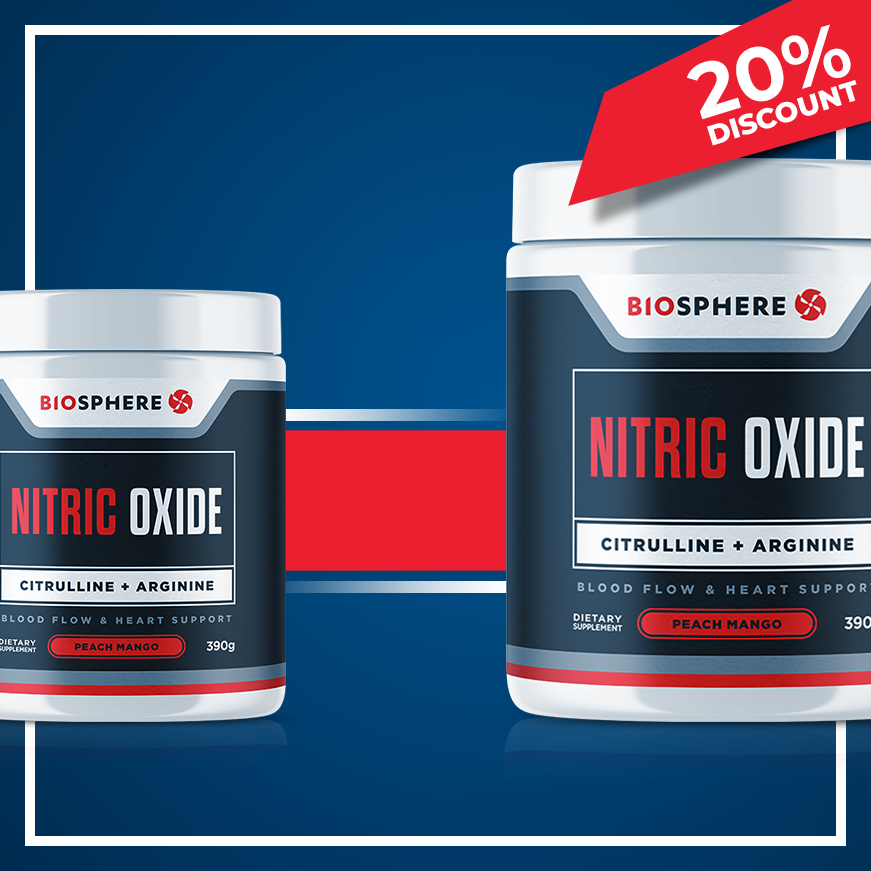Table of contents
Defining High Blood Pressure
High blood pressure or hypertension (including primary hypertension and secondary hypertension), is generally defined as systolic blood pressure over 140 mmHg or diastolic pressure over 90 mmHg regularly.
It is a condition where the force of your blood against your artery walls is too high for too long and is referred to as a silent killer because it is insidious, chronic and progressive.
Understanding Blood Pressure
Arteries are blood vessels that carry blood from your heart to all parts of your body, whereas veins are blood vessels that carry blood back to your heart.
Blood pressure readings have two parts:
Systolic – The higher number quoted on top of the reading which is the pressure in the arteries when the heart beats, forcing blood around the body. Ideally between 110-120mmHg.
Diastolic – The lower number quoted on the bottom of the reading which is the pressure in the arteries when the heart is relaxed after a beat. Ideally between 70-80mmHg
According to the last NZ Adult Nutrition Survey over one-third of adult males and over one-quarter of adult females have hypertension, with most not knowing it. While the ideal way to manage it is still debated, what is agreed is that it is under treated in New Zealand.

Diagnosing High Blood Pressure
The first steps in your journey to decreasing and managing high blood pressure readings are recognising the problem and getting a baseline reading.
How to measure blood pressure
Blood pressure can vary significantly during the day depending on a host of factors, making getting an accurate blood pressure reading the first challenge. There are a few ways of tracking, measuring and managing blood pressure over time.

Home blood pressure monitors
Home blood pressure monitors are widely available and an excellent place to start. It is crucial to get the right cuff size, as one that is too small and tight can overestimate blood pressure, and one that is too large and loose can underestimate it.

24-hour monitoring
24-hour monitoring is the gold standard for confirming a diagnosis of hypertension as you are taking readings every 30 minutes to an hour throughout the day.
As one of these monitors is not readily available to everyone, most people are likely to be tested during regular check-ups.

White coat hypertension
White coat hypertension can occur when blood pressure readings at your doctor’s office are higher than they would generally be in a relaxed state at home.
The anxiety of having your blood pressure monitored in itself can raise it significantly and potentially offer a false reading.
What are the risk factors of Hypertension?
There are a few risk factors and serious health problems such as excess weight, aging and lack of physical activity. Other risk factors include the possibility to develop diabetes, smoking and alcohol consumption; these can all contribute to high blood pressure levels.
So if any of these risk factors fit you and your lifestyle (or other risk factors), it might pay to get an annual blood pressure check because you will have an increased risk of having high blood pressure.
What are the symptoms of high blood pressure?
The dangerous thing about high blood pressure hypertension is there are usually no signs and symptoms until it has been around for a long time, causing damage to blood vessels and organs.
Generally, the longer someone has had high blood pressure, the higher the chance of damage.
What are the causes of high blood pressure?
In most cases, there isn’t a specific reason for hypertension; so many factors can make you develop high blood pressure, but the most important one is generally your weight. So while there is a genetic component, your lifestyle and dietary choices outweigh this.
Some common risk factors include:
Obesity
Aging
Smoking
Excessive alcohol consumption
Lack of exercise
Stress
Excessive caffeine consumption
Excessive consumption of processed foods
Adrenal gland and thyroid disorders
Some medications such as:
Oral contraceptives
Anti-inflammatories
Nasal drops and sprays
Cough medicine
Appetite suppressants
Eye drops
Why high blood pressure is harmful
Chronic high blood pressure adds to stress on the heart, leading to problems such as strokes, heart attacks, cognitive decline and kidney failure. Blood pressure has a normal distribution across the general population, and the cardiovascular system risk (cardiovascular disease) associated with increasing blood pressure is continuous. For every two mmHg increase in systolic pressure, the risk of death from heart disease and stroke rises by 7% and 10% respectively.

Heart Attack
High blood pressure damages arteries that can become blocked and prevent blood flow to the heart muscle, causing a heart attack.

Stroke
High blood pressure can cause blood vessels in your brain to clog and burst.

Heart Failure
The increased workload from high blood pressure can cause your heart to enlarge and fail to supply blood around your body.

Angina
High blood pressure can lead to heart disease, of which angina is a common symptom.

Kidney Disease
High blood pressure can damage the arteries in the kidneys and interfere with their ability to filter blood (causing kidney disease).

Eyesight Problems
High blood pressure can damage blood vessels in the eyes, impairing vision.
Sexual Dysfunction
High blood pressure can lead to erectile dysfunction in men or low libido in women.

Peripheral Artery Disease
Plaque build up caused by high blood pressure can cause narrowing of the arteries, resulting in pain and fatigue.

Cognitive Decline
Decades of observational studies have shown having high blood pressure increasing the risks of cognitive decline later in life. Another study showed lowering blood pressure to normal, lowers risk of cognitive impairment, a risk factor for dementia.
What should my blood pressure be?
The New Zealand Heart Foundation says an ideal blood pressure reading for most people is 120/75 mmHg or less. Still, optimal blood pressure in an individual depends on age and the presence of other co-morbidities.
The optimal blood pressure for a healthy individual would be closer to 110/70.
Treating High Blood Pressure, where do I start?
Hypertension is a condition that requires regular management and review to get on top of; treating high blood pressure depends on how high your blood pressure is and what the causes are.
Additionally, certain foods, supplements and lifestyle activities can help drive down blood pressure which we advise doing, as well as addressing the causes.

Normalising Blood Pressure Through Lifestyle, Diet and Supplementation Intervention.
Here is where you try and identify what might be causing your high blood pressure, eliminate that, then engage in activities that help bring it down. Prolonged high blood pressure causes harm to your heart and blood vessels; the sooner you can bring it down to normal the better. Consider implementing as many blood pressure lowering things as you can into your day to day life.
Lifestyle

Exercise
Getting adequate daily exercise is one of the most important lifestyle changes you can make to aid not only your blood pressure but your overall health. As little as 75 minutes of vigorous exercise per week can lower blood pressure and improve heart health.
Reduce Stress
This one can be hard for people, but stress is a significant driver of high blood pressure. If you have chronic stress, your body is in a flight or fight mode, which raises heart rate and constricts blood vessels.
On top of this, stressed individuals tend to engage in other behaviours that raise blood pressure, such as drinking too much alcohol and eating high carb processed foods.
As it is hard to measure or quantify, your progression in managing stress generally comes down to feeling. However, you can use plenty of tools to help reduce stress, such as meditation, soothing music, working less and just identifying the causes of your stress and reducing them

Mediation and Deep Breathing
If you can’t cut out the source of your stress and just need to manage it better, meditation and breathing can help. Both have been shown to activate the parasympathetic nervous system, which relaxes the human body, slows heart rate and lowers blood pressure.
There are many different types of meditation and breathing work you can engage in to help relax and lower your blood pressure.

Lose Weight
If you’re overweight and have high blood pressure, losing some weight can make a big difference to your heart health. This benefit compounds when paired with exercise, as your blood vessels will start to do a better job expanding and contracting, making it easier to pump blood around.

Quit Smoking
While this is a diminishing habit in New Zealand, it is still important to mention that smoking increases blood pressure by damaging the blood vessel walls and narrowing the arteries.

Get Good Quality Regular Sleep
If you have a snoring problem, you may also have sleep apnea. Treating this can help decrease blood pressure as it affects your breathing as you sleep.
Diet
Adding into your diet
Eat more potassium-rich foods
Potassium is one of many important minerals you should consume, as it plays a role in relaxing the walls of blood vessels, helping to decrease blood pressure.
Leafy greens
Tomatoes
Bananas
Avocadoes
Oranges
Tuna
Salmon
Nuts & Seeds
Beans
Consume more cocoa
Cocoa is rich in flavonoids that help blood vessels dilate. A review of studies found that flavonoid rich cocoa improved several heart health markers, including lowering blood pressure.
Ideally this would come from a raw cacoa powder, used in something like a smoothie, or very dark chocolate.
Eat berries
Berries are packed with polyphenols which are natural plant compounds linked to improved heart health. They can reduce the risk of stroke and improve blood pressure.
Removing from your diet
Salt
While you may have heard reducing sodium intake is a good way to reduce blood pressure, more recent research indicates that the relationship between sodium and high blood pressure is less clear.
Usually the source of salt is the problem, not the salt itself. When you’re eating processed, deep fried salty takeaway foods, you’re getting a high inflammatory response to the fried seed oils and high carbs.
Only at extremely high levels of sodium intake was there a problem.
Don’t feel like you need to cut out salt, as it is very important to get enough salt each day. There is a sweet spot, where you want to get at least 3 grams per day and slightly more if you’re active and sweating a lot.
Alcohol
Alcohol consumption has a very strong link to elevated blood pressure. Drinking too much can raise blood pressure to unhealthy levels. Consuming more than two to three drinks in a sitting temporarily raises blood pressure with repeated alcohol consumption leading to long-term increases.
Cut out added sugar and refined carbs
There is a very strong link between excess refined carbohydrate consumption and high blood pressure.
Excess consumption of refined carbohydrates and sugars can lead to the over production of the hormone insulin, which drives up blood pressure and causes bodies to put on weight.
Cutting down the amount of sweet and starchy foods can lead to a dramatic reduction in blood pressure. This association has been shown in several dietary interventions trials where people are given a lower carbohydrate diet.
A study of people who went on a 6 week carb restricted diet saw greater improvement in blood pressure and other heart makers than those who didn’t.
Nitric Oxide
The role of nitric oxide on blood pressure and heart health
The human body can produce nitric oxide molecules; they are critical for your blood pressure and overall health. It is so important because it plays a direct role in vasodilation, meaning it relaxes the muscles of the blood vessels, causing them to widen, increasing blood flow and decreasing blood pressure.
Optimal levels of nitric oxide are linked to healthy blood pressure and improved heart health. Where as nitric oxide deficiency is linked to high blood pressure.
We want to increase our nitric oxide production when aiming to reduce blood pressure. We can improve our nitric oxide production through several dietary and lifestyle changes and some supplements.

Supplements
After dietary and lifestyle changes, there are a few supplements that can help lower high blood pressure—most work through enhancing nitric oxide production, while some are key for heart function.
As we cannot supplement directly with nitric oxide, we must provide our body with the nutrients it needs to make optimal amounts of nitric oxide or enhance its abilities. Here are a few that help boost nitric oxide and support normal blood pressure.
L-Arginine
L Arginine is an essential amino acid that converts directly into nitric oxide in the body; this helps the body to build up protein.
L-Citruline
L-Citrulline is an amino acid which the body converts to L-arginine therefore boosting nitric oxide levels. It is used alongside L-arginine as its bioavailability helps it boost blood arginine levels just as well, if not better than L-arginine alone.
Vitamin C
Vitamin C helps improve the bioavailability of nitric oxide, resulting in more for our body to use.
Berberine
Berberine increases nitric oxide production and improves blood vessel function.
Vitamin D
Vitamin D regulates nitric oxide synthesis, again making it more bioavailable. Vitamin D deficiency is a risk factor for endothelial dysfunction which occurs with low nitric oxide. It is also import for heart health, with an associated between vitamin D deficiency and high blood pressure.
Hawthorn Berry Extract
Hawthorn Berry Extract has been used in ancient Chinese medicine for centuries. It acts as a vasodilator, helping to lower blood pressure.
Potassium
Potassium is known to help regulate blood pressure by promoting sodium excretion through urine and helping blood vessels relax.
Beet Root Powder
Beet Root Powder is high in nitrates that convert to nitric oxide which has been shown to reduce blood pressure.
Magnesium
Magnesium plays a key role throughout the entire body but has specifically been shown to help reduce blood pressure in hypertensive adults. It helps modulate endothelium vasodilation in blood vessels.
Taurine
There is growing evidence that taurine deficiency is associated with hypertension and that oral supplementation can have antihypertensive effects in humans
How Else to Boost Nitric Oxide Levels
There are many ways to increase your nitric oxide levels through diet, lifestyle and supplementation.
There are many ways to increase your nitric oxide levels through a healthy diet, a healthy lifestyle and dietary supplements.
Nitrates are compounds formed when nitrogen combines with oxygen or ozone. Some foods contain much higher levels of nitrates than others.
The nitrates that your body absorbs convert into nitric oxide. Several studies show eating nitrate rich vegetables can lower blood pressure.
Diet
Increase the consumption of foods high in nitrates
Beetroot
Citrus Fruits
Bananas
Celery
Dark Chocolate
Leafy Greens
Garlic
Garlic helps activate the enzyme nitric oxide synthase, that aids in the conversion of nitric oxide from the L-arginine. Our body uses L-arginine to make nitric oxide and garlic assists in this process.
Dark Chocolate
Dark chocolate is packed with cocoa flavanols which help increase levels of nitric oxide. One study showed consuming 30 grams of dark chocolate led to significant increases in nitric oxide levels in the blood, followed by decreases in both systolic and diastolic blood pressure.
Citrus Fruits
The vitamin C found in citrus fruits can enhance levels of nitric oxide by increasing its bioavailability, improving absorption in the body. Just like garlic helps bump up nitric oxide synthase.
Watermelon
Watermelon is a great source of citrulline, an amino acid which is converted to arginine, which is then converted to nitric oxide. Research suggests watermelon can not only enhance nitric oxide levels but could also improve exercise performance, lower blood pressure and boost blood flow.
Nuts and Seeds
These tend to be high in arginine, the key amino acids that is involved in the production of nitric oxide. A study of 2771 people showed higher intake of arginine rich foods was associated with higher levels of nitric oxide in the blood.
Lifestyle
There are a few things you do during your day to boost nitric oxide levels
Daily Sunlight Exposure
Sun exposure to the skin helps produce nitric oxide due to to the nitrites within our skin cells. By having high nitrate stores from your diet, the sun helps the conversion to nitric oxide.
There is research to suggest the suns UV-A has been reported to lower blood pressure, presumably through nitric oxide production.
EXERCISE
Exercise helps improve function in endothelial cells and keeps blood vessels healthy by increasing your body’s natural ability to produce nitric oxide. In addition, the increased antioxidant activity from exercise also helps inhibit the breakdown of nitric oxide.
The health benefits of exercise on endothelial health and nitric oxide production are noticeable within ten weeks of exercising for 30 minutes, three times per week according to one study. For optimal results, you want to combine cardio and resistance training.
SAUNA
If you have access to a sauna, it can be an excellent tool for boosting nitric oxide and many health markers. For example, frequenting the sauna twice weekly for three months, especially when combined with exercise has shown to reduce blood pressure in hypertensive men, through an increase in nitric oxide release.
Avoid Mouthwash
Most mouthwashes destroy all types of bacteria in your mouth, including the beneficial ones that help produce nitric oxide. Humans cannot produce nitric oxide from nitrates without the oral bacteria that mouthwash kills. As a result, one rinse of mouthwash can result in a decrease of nitric oxide production for up to 12 hours.
Medications for high blood pressure
There are medications (prescription drugs, etc.) that can help control high blood pressure that your doctor will probably advise for you (after you get your blood pressure checked) if your blood pressure stays high. However, these do not cure high blood pressure.
If you use blood pressure medications, don’t take that as a free pass to keep living as you are. Instead, use that as a wake-up call to make lifestyle and dietary changes to enable you to get off the medication as soon as your blood pressure falls into a manageable range.
These medications don’t come without risks and side effects, so make sure to save your health with some of the suggestions covered above.
Many of these dietary and lifestyle changes are going to lower your blood pressure and drastically improve your overall health. However, when you make positive lifestyle and dietary changes, your blood pressure won’t be the only thing to improve. Your weight will normalise, your blood sugar, energy levels, mood, and brain function will also improve.
Nitric Oxide


Use the discount code NITRIC20 at checkout for 20% OFF your first order.
Nitric Oxide
A blend of research-backed ingredients proven to enhance nitric oxide production, supporting optimal blood flow and normalised blood pressure.
Use the discount code NITRIC20 at checkout for 20% OFF your first order.
